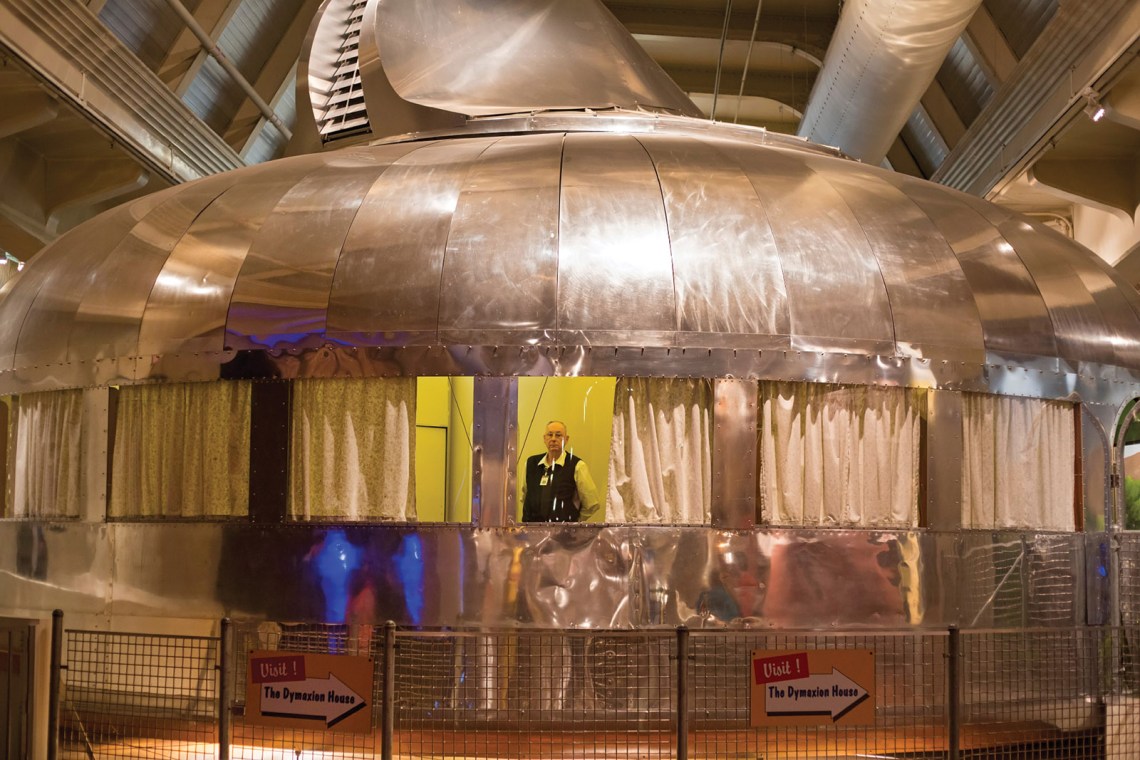In response to:
Space-Age Magus from the November 3, 2022 issue
To the Editors:
James Gleick in his review of Alec Nevala-Lee’s biography of Buckminster Fuller writes that “Fuller can be remembered as a crank and a charlatan and a prophet and a visionary” [NYR, November 3]. This raises the question of where the balance lies.
Gleick rightly highlights Fuller’s geodesic domes as his most significant achievement. Fuller recognized geodesic domes as being light, strong, simple to construct, and scalable to all sizes; hence economical. Fuller commercialized the concept and enthusiastically popularized geodesic domes, which inspired scientists to understand virus structure and invent chemical architectures that earned two Nobel Prizes.
Fuller wasn’t the first to build geodesic domes. Viruses, which are as old as life itself, are built from the same architectural foundation. While Gleick rightly makes light of Fuller’s geodesic domes as awkwardly shaped and leaky dwellings for humans, Fuller’s engineering principles for building domes are excellent for construction on the nano scale.
Viruses are faced with the engineering challenge of building capsids from proteins whose entire genome must be enclosed within the small interior of the capsid. James Watson and Francis Crick in 1956 postulated that viruses solve this challenge by building icosahedral capsids from twenty triangular building blocks, each comprising three identical proteins. The beauty of this design is that it is the most economical and simplest to construct as possible; the virus only needs to enclose the genome necessary to encode a single capsid protein.
But what about larger viruses with more genes than can fit into a capsid made from a single protein? Fuller started by building icosahedral domes but realized that larger structures containing more than twenty triangles could be made by taking the primary triangles and systematically assembling them into larger triangles, each of which could then be used to build an icosahedron. In 1962 biologists Donald Caspar and Aaron Klug, inspired by Fuller’s domes, created a mathematical formulism that classified all the icosahedral forms viruses could make, and it turns out that a great many of all viruses are built on this scheme. Based in part on this work, Klug won the Nobel Prize in Chemistry.
Furthermore, inspired by Fuller’s domes, chemists in the 1980s devised ways to make large carbon-based molecules in precisely the form envisioned by Fuller—named Buckminsterfullerenes by their inventors. Fullerenes have great potential for application in nanotechnology, and for their discovery, Robert Curl, Harold Kroto, and Richard Smalley shared the Nobel Prize in Chemistry.
And just last year, myself and colleagues used a technique called DNA origami to build capsids from triangles using the precise architectural rules of Caspar and Klug. Our nano-sized geodesic domes are being explored as antiviral agents to cure infections such as Covid. So while Gleick is correct that no one wants to live in a Fuller dome, it is a fantastic, economical, and viable architecture for technologies on the nano scale.
Gleick writes that “from beginning to end, experts saw through him.” This is true, but experts were also inspired by Fuller to make Nobel Prize–winning scientific advances that additionally have tremendous technological promise. Thus, on the balance between “charlatan” and “visionary,” I argue Fuller belongs in the latter camp.
Seth Fraden
Brandeis University
Waltham, Massachusetts
To the Editors:
While I enjoyed reading the review by James Gleick of the new biography of Buckminster Fuller, I stopped short when reading his claim that “no Dymaxion House was ever built.”
More than once I have toured the full-scale example at the Henry Ford Museum in Dearborn, Michigan. You may see and read about it at thehenryford .org/visit/henry-ford-museum/exhibits /dymaxion-house.
I believe this clearly demonstrates that one was built. In addition, the museum states, “Painstakingly restored, it’s the only remaining prototype in the world,” indicating to me that more of them formerly existed as well.
Bob Frishman
Andover, Massachusetts
To the Editors:
In his essay about Buckminster Fuller, James Gleick states that no Dymaxion House was ever built. That is confusing to me because a friend of mine grew up in a Dymaxion House in Wichita, Kansas. The house was subsequently moved to the Henry Ford Museum in Dearborn, Michigan.
Judith Graf
Chicago, Illinois
This Issue
December 22, 2022
Naipaul’s Unreal Africa
A Theology of the Present Moment
Making It Big



